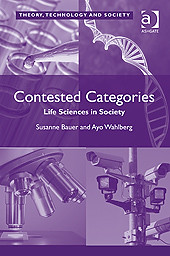Historians of medicine have largely eschewed notions like ‘progress’ and ‘advance’ in medical science and medical practice in favour of more historicist and relativistic understandings. But for medical practitioners and patients alike, the notions of ‘progress’ and ‘advance’ usually make more sense. Some philosophers too think it is time to refocus on the idea of ‘medical progress’.
A forthcoming conference at the University of Bristol (13-15 April 2010) will address the following topics:
To identify progressive trends in current medicine, we need to understand the nature of historical progress more clearly. Has medicine always progressed? If not when did it begin to progress, and why? Historians have long debated these questions. Most recently, David Wootton’s controversial argument that medicine only started to progress in the late 19th century, has renewed interest on the nature of progress in medicine. These questions invite the following further questions.
We need to understand how progress in medicine should be measured. The range and effectiveness of available interventions is an obvious metric, but there has been considerable recent interest in preventive medicine. What are the limits of preventive medicine? Are preventive strategies truly medical, or an admission of the limitations of medicine?
There is a need for greater clarity on the nature of health and disease, if we are to understand progress in promoting the former and treating the latter. Are these concepts biostatistical (as Boorse argues) or partly normative (e.g. Kingma)? What role do social pressures, such as conceptions of acceptable weight, height or sexual characteristics play in shaping the distinction between medically necessary and elective interventions? Is health just the absence of disease, or does modern medicine need to acknowledge a more inclusive notion of well-being?
There is a particular need for greater clarity on these questions as they apply to psychological disorders and the various psychiatric, psycho-therapeutic, and psycho-pharmacological interventions designed to deal with them. The distinction between health and disease is especially unclear in the psychological case, and the history of medicine shows it to be especially fluid.
It is necessary to differentiate the perspectives of medical scientists, clinicians, and patients concerning the nature of progress, and related notions such as a successful treatment outcome. The most dramatic illustration of this need is perhaps the recent controversy on voluntary euthanasia, where Hippocratic principles appear to be at odds with patients’ own desires.
To further medical progress, it is necessary to identify its causes. Is progress driven by advances in basic physiological science? Or by clinical need? By some combination of these—in which case how do they interact?
Insofar as medical knowledge progresses, is there a single, unified methodology for generating that progress, e.g. ‘the scientific method as applied to medicine’? Recent debates concerning Evidence Based Medicine and randomized controlled trials have highlighted the need for clear answers to this question. Is the RCT a “gold standard”, or are there a number of ways of coming to know in medicine? Are these ways incommensurable, or does can a “hierarchy of evidence” (such as that advocated by proponents of EBM) provide a clinically useful basis of comparison and ranking?
The conference will encourage the involvement of methodologically interested medical professionals, philosophers of medicine and historians of medicine. More here.

 Fair enough, but otherwise, when thinking of ‘university museums’ most people probably think in terms of content — i.e, ‘university museums’ are institutions that collect and display the history of the university. (In the same way that we think of an ‘army museum’ as one that collects and displays artefacts from the history of the armed forces, irrespective of whether it is owned by the army or by the city.) A ‘university museum’ has all kinds of stuff from good old university days, maybe even the university’s archive and image collection.
Fair enough, but otherwise, when thinking of ‘university museums’ most people probably think in terms of content — i.e, ‘university museums’ are institutions that collect and display the history of the university. (In the same way that we think of an ‘army museum’ as one that collects and displays artefacts from the history of the armed forces, irrespective of whether it is owned by the army or by the city.) A ‘university museum’ has all kinds of stuff from good old university days, maybe even the university’s archive and image collection. Contents:
Contents: